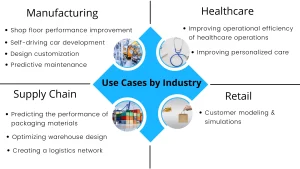Security threats continue to arise from new businesses, software applications and devices that demand higher levels of data protection, creating an increasingly complex cybersecurity challenge.
No matter if you are a business leader, security specialist, or simply curious about cyber security in general. Here are a few trends to keep an eye out for this year and in future years.
1. Social Engineering Attacks
Social engineering attacks are a form of cyber crime that involves manipulating human interaction to commit cybercrimes, making them harder for organizations to detect and prevent than malware-based intrusions.
Social engineers employ numerous tactics to gather sensitive data. These methods may include baiting users with false promises, using coercive tactics, or hacking into accounts.
Phishing scams use email or text messages to lure victims in with promises of money or valuable information, as well as lure them into clicking malicious links and installing malware onto their devices.
Access tailgating is another popular form of social engineering attack, consisting in conning an authorized individual into entering secure areas they don’t possess access to.
2. Cloud Computing
Cloud computing enables organizations to easily scale their technology and data infrastructure, freeing them up to focus on business growth while meeting regulatory compliance requirements more easily and cost-effectively. It’s an excellent way of saving money while meeting compliance obligations.
Cloud providers typically offer three main forms of cloud computing: Infrastructure-as-a-Service (IaaS), Software-as-a-Service (SaaS) and Platform-as-a-Service (PaaS). Businesses renting servers, storage and networking infrastructure in remote locations.
Cloud computing offers rapid application development teams the scalability and flexibility they require, but also increases security risks due to vulnerabilities like Spectre and Meltdown that allow attackers to gain entry to encrypted data in computer kernel memory.
Organizations can protect themselves from security breaches by creating robust controls and guardrails to assist API users in using them properly and by providing education about security to users.
3. Cybercrime-as-a-Service
Cybercriminals have never been easier or cheaper to hire than ever before thanks to cybercrime-as-a-service, a new dark web marketplace offering criminals malware, ransomware and phishing kits for hire at an agreed-upon cost.
According to the 2023 Sophos Threat Report, these services have emerged as one of the primary drivers of cybercrime growth. By providing low-cost tools and tactics necessary for conducting targeted attacks with lower costs than before, these services allow cybercriminals to expand their activities more rapidly and make more money in doing so.
Sophos’ report also revealed that these services have commercialized all aspects of hacking toolkit, from initial infection through detection. This has made it easier for anyone with an idea to enter this industry of theft.
4. Artificial Intelligence
As our global economy becomes more digital, cyber security threats have become more sophisticated, making it harder for enterprise networks to protect themselves against potential risks.
Artificial intelligence can assist cybersecurity teams by analyzing vast amounts of data to detect patterns that reveal vulnerabilities and enhance network security continuously while simultaneously detecting suspicious traffic, thus helping prevent cyberattacks.
AI can be a complex process and requires large volumes of data in order to be effective. Labeling and training models is also involved, which may take considerable time.
5. Machine Learning
Machine Learning (ML) is a form of artificial intelligence which enables computers to learn autonomously from data and experience, recognizing patterns to predict outcomes. ML is an invaluable asset in numerous fields and can be utilized to increase customer retention, detect fraudsters, detect malware threats, predict product recommendations or automate business processes.
Automation technology is an indispensable element of cybersecurity technology. It can save labor by automating repetitive tasks, preventing unknown attacks and making cybersecurity more scalable.
Modern cybersecurity solutions make use of machine learning in multiple ways, making its implementation invaluable for maintaining a strong security posture in an ever-evolving threat landscape. For instance, machine learning (ML) can detect anomalous behavior quickly and take appropriate actions against it immediately.






More Stories
Integrating Digital Twin Technology for Small-Scale Manufacturing and Logistics
The Developer’s Guide to Post-Quantum Cryptography Implementation
Smart Home Automation for Renters: Your Guide to a Smarter, Temporary Space